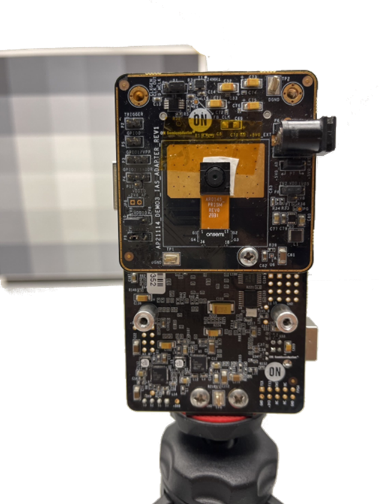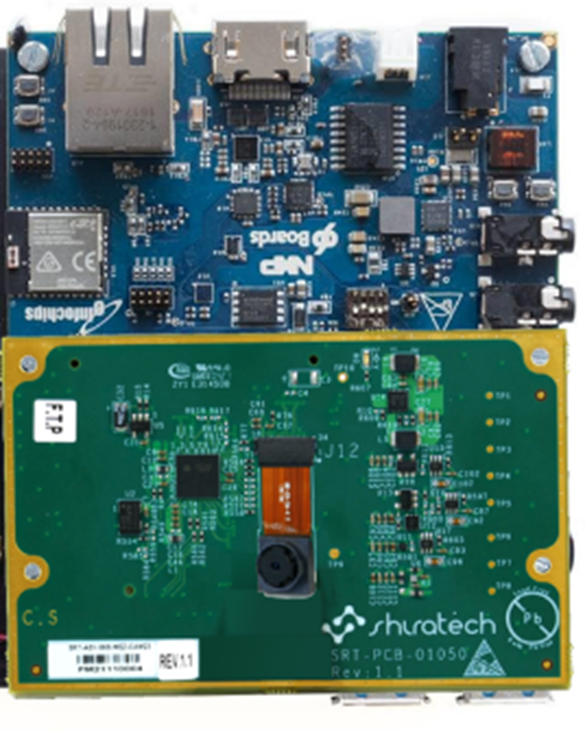These sensors can be used to enhance human perception by detecting unseen details, navigating inaccessible areas, enabling continuous monitoring, and facilitating real-time robotic interactions.
While selecting the right image sensor is essential, other factors - such as the choice of a host processor - can also significantly impact development timelines and time to market.
Utilising off-the-shelf parts for early-stage evaluation, testing, and prototyping can help to speed up the design process. However, differences between prototype components and final production hardware often require additional software adjustments, which may extend development time.
For instance, although many teams use Raspberry Pi for prototyping due to its availability and affordability, it’s not always scalable for mass production.
Instead, development boards featuring Systems on Modules (SoMs) from 96Boards or processor manufacturers can offer greater scalability - allowing direct software integration into production designs.
These choices, however, may be constrained by the availability of compatible image sensors and camera connectors on the carrier board.
Streamlining Camera Connections
MIPI CSI-2 is the predominant interface for connecting image sensors to processors. However, the absence of a standard connector or pinout across processor suppliers complicates integration.
Companies like NXP and Nvidia are shifting toward a 22-pin ribbon connector and pinout popularised by the Raspberry Pi Zero; it supports a four-channel MIPI bus and simplifies the connection of cameras to evaluation boards.
However, until a universal standard emerges, adapter boards serve as practical solutions to bridge differences between camera and processor configurations.
Standardised Camera Interfaces
For serialised camera data, common interfaces like USB, GigE, CoaxExpress, and Camera Link are prevalent. Although these utilise MIPI interfaces internally, many include their own host processors to facilitate seamless integration with diverse systems.
PRISM Reference Design by onsemi
onsemi has introduced a standardised interface through their Imaging Access System (IAS) and now extends this with the PRISM reference design; it provides a unified connector and pinout.
Such a setup allows multiple camera modules to interface with the Demo3 evaluation system or various host processor systems through compatible adapter boards. Alif Semiconductor’s evaluation boards, for example, directly incorporate this connector for straightforward integration.

Figure 1: onsemi Demo3 with camera module.
A Supplier Network for Every Development Phase
Arrow’s extensive supplier base makes it possible for developers to gain access to essential tools at every phase of imaging product development:
Proof-of-concept: Arrow suppliers like TechNexion and Basler provide complete cameras with USB or GMSL interfaces for image capture - facilitating early validation of imaging algorithms.
Sensor evaluation: onsemi’s Demo3 EVK platform and DevWare software enable in-depth sensor evaluation - allowing engineers to optimise sensor settings for peak performance.
Software development: With adapter boards and Linux drivers, engineers can integrate the same sensors with development platforms from Nvidia, NXP, or Lattice to accelerate software development.
Mass production: Suppliers such as Appleye and Leopard Imaging offer custom camera solutions designed for production - aligning with mass-market requirements.
Case Study Example 1: Doorbell Camera Project

Figure 2: NXP Thor96 with camera and adapter
A customer aims to develop a battery-operated 4K doorbell camera with low power consumption and accelerated time to market. The onsemi AR0830 image sensor, part of the Hyperlux LP (Low Power) family, is chosen due to its low power requirements and motion-triggered wake feature.
It utilises an Appleye camera module (AE-CCM-AR0830-C-68) connected through an onsemi AP1302 ISP to an NXP i.MX8M processor. This way, the development team can start application software while refining the hardware design using the 96Boards Thor96 development board and the Shiratech SRT-VISION96-AR0830 mezzanine.
The available Linux driver with ISP tuning settings minimizes development time, which can increase speed to market.
Case Study Example 2: Mobile Delivery Robot
Another customer is designing a delivery robot which will be 4K, has HDR, and Read LED signs and is usable with LED illumination.
Pavement conditions can vary greatly, even more so than roads with objects and pedestrians continuously changing. All the requirements for road vehicles apply as well as the need for enhanced object recognition and avoidance.
The customer is looking for a module solution to quicken time to market. Leopard Imaging has a several camera solutions using the AR0823, which has 8.3Mp, can support up to 150dB of dynamic range, and has integrated LED flicker mitigation.
They offer several lens options as well as multiple Colour filter array types.
In addition to the image sensor Leopard Imaging can also provide a complete system with a host module including Nvidia AGX Orin.
Author details: Ken Weiner, Field Applications Engineer, Arrow Electronics













